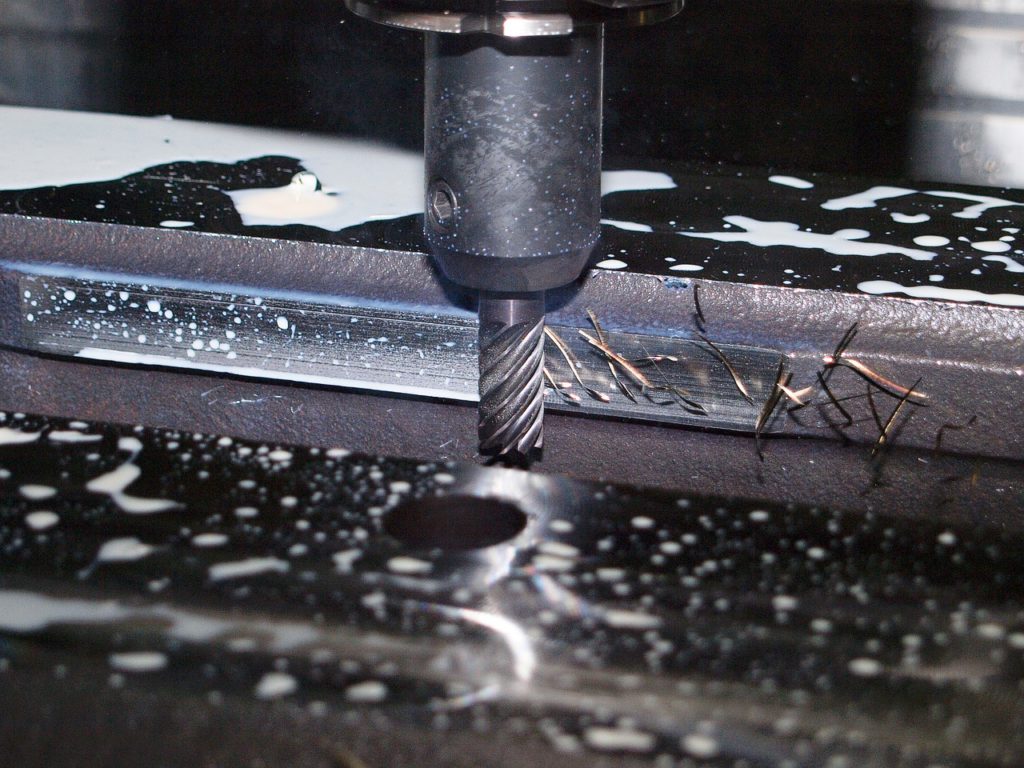Nowadays, as the world is becoming increasingly digital, mechanical engineers have access to a growing set of tools that can help them be more creative and innovative. To succeed in the future, and also reach your full potential in your career, you will have to master some of the best tools for a mechanical engineer.
First, if you’re looking to launch your own blog and start writing articles yourself, no matter what the subject, you can launch your blog with Bluehost for just $3.95/month.
Start creating content and launch your blog with Bluehost.
On the flipside, if you’re not aware of the latest technologies and tools that are being used in the mechanical engineering field, you will be left behind and it will be harder for you to achieve success. You will struggle to gain respect, and also to reach the same level as your colleagues. To avoid being left behind, courses can be taken on LinkedIn Learning to enhance your knowledge and skills, and it is free for the first 30 days!
This is what will happen if you are not comfortable with all of the newest and most commonly used tools.
To avoid falling behind as a mechanical engineer and losing touch with the latest tools and cutting edge technology in the field, we have put together a list of the best tools that you will use and need as a mechanical engineer:
Graphing Calculator

A lot of people would claim that graphing calculators are out of date, not used, and their function has been replaced by computer programs such as Excel. The likes of Excel can run many of the same calculations as a graphing calculator, but with a bigger interface and more options for the user.
Graphing calculators have been used for years and can definitely still have value for any mechanical engineer. Taking the time to renew your skills with a graphing calculator in your head, will at the very least help you to work faster than others in the field.
Construction Software
Using a top-of-the-line construction software can take your workflow to the next level. This type of program will allow you to make changes to your plans and collaborate with the other people involved with the project in real time, and this can prove to be a huge advantage.
This can help to mitigate any unexpected delays or disastrous mistakes that could hinder the overall progress of the job or project. If you can greatly speed up your workflow, simplify communication with other parties/vendors and enable easy collaboration between everyone, this will vastly improve the timeline of the project.
An example of this invaluable software is BIM (Business Information Modelling), which is available in Autodesk Revit, which allows the generation and exchange of data and information between the various project parties. It is an indispensable part of the construction decision-making process and without a doubt one of the essential tools for a mechanical engineer.
3-D Printers

When 3-D printers came out as tools for a mechanical engineer, and burst onto the scene, it was somewhat of a game changer. 3-D printers simplified a lot of tasks performed by mechanical engineers and they were a huge convenience to them. The fact that a mechanical engineer can easily create a 3-D model of the object that they are designing is an invaluable tool to have at their disposal.
3-D printers are at the front line of cutting edge technology available to mechanical engineers at the moment, even working mechanical engineers 5 to 10 years ago did not have access to them. As is the case with all new technology it was quite expensive at the start, now it has reached a critical point where although the technology is still futuristic, it has become affordable and a top of the range printer will only set you back a few hundred dollars.
Mechanical engineers use these 3-D printers to bring their ideas to life, so to speak, and more importantly showcase them to potential clients and investors. In minutes, a scaled-down model of your current design can be sitting in front of you. Not only is this an incredible amount of fun, but it allows greater creative freedom and a greater understanding of the final product throughout the design process.
Previously, in the dark days where 3-D printers were not an option, mechanical engineers struggled trying to convey their ideas and concepts to clients and investors. It was hard to show the client the design of the product on a screen, where it is not a tangible product that you can feel or touch. Having comprehensive knowledge of how to use and operate a 3-D printer will be essential to your success as a mechanical engineer.
Internet of Things
The Internet of Things is a common platform used to integrate a variety of objects and pieces of equipment within the “IoT” itself. This is a critical skill for a mechanical engineer to have, it will allow you to streamline manufacturing and operations processes while understanding them a little better, and collect vast amounts of data quicker than ever before.
This aspect of mechanical engineering and its future is bright and expanding very quickly. The final outcome or result of this field is impossible to predict and has endless opportunities associated with it, which solidifies its place on this list of the best tools for a mechanical engineer.
Design Tools
Working as a mechanical engineer in the United States is exciting, rewarding but also demanding. An increasing skill gap has ensured that there are more projects out there than qualified professionals to complete them.
As your role becomes more demanding and you are expected to have a lot of knowledge, sometimes working in an interdisciplinary role, this can seem overwhelming. Fortunately, there are a multitude of design tools available today to help streamline your workflow so you can design more, and be a more efficient engineer in general.
Below are a few of the best tools for CAD, CAM, PCB layout, simulation and programming to hopefully alleviate some of the pressure you are experiencing as you are being overworked in your job!
Computer Aided Design (CAD)
SolidWorks
SolidWorks is the most popular CAD/CAE software in the world whether you work with 2-D or 3-D designs. This software is very versatile, it supports a multitude of industries, including industrial and mechanical engineering in aerospace, architecture, augmented reality, automotive, energy, medical, shipbuilding, technology, and many more.

This software gets updated every year, and in its new releases SolidWorks continues to offer the newest technology in order to streamline complex and large workflow applications, improve collaboration and the design of user interfaces.
If you happen to be working with contractors often, it offers a development environment which comes at no extra cost with the “design for manufacturing” solution, and this allows you to collaborate on design, communication, manufacturing and validation.
Using this array of features, SolidWorks has became a widely used program, it is compatible with a wide range of 3-D printers and milling machines while also offering some fantastic plug-ins. It also supports generating automated reports, detecting errors, simulation, SolidCAM (a CAM plugin) and more, and it can be tailored with features depending on the industry that you work in.
CATIA
Without a doubt SolidWorks is a very useful tool, but unfortunately it does take a bit of time to learn how to use it. If you are an entrepreneur or a start-up, Dassault Systèmes® who is the creator of SolidWorks, can offer free courses to help you learn how to use it.
That being said, and alternative version of SolidWorks that is a bit more affordable and offers the same platform for architecture, automotive, industrial equipment or shipbuilding can be found in CATIA. CATIA stands for (Computer Aided Three-dimensional Interactive Application), this is made by the same company as SolidWorks.
CATIA is a CAD/CAM/CAE program that is still a useful software tool while being cheaper than SolidWorks. If you are not a fan of the Windows platform, you can check out libreCAD as an option for a useful open source, 2-D software.
Computer Aided Manufacturing (CAM)
There is no ultimate best CAM software out there. The quality of the program that you use largely depends on what you use it for. The CAD software that you use is also a big factor, which is why using a program like AutoCAD or SolidWorks is recommended, because the widely used software tools offer integration with a wide range of programs.
That being said, here is a list of the best options out there right now:
SolidCAM
SolidCAM Is a plug-in that communicates directly with SolidWorks, and therefore merges directly with your CAD models. It also has compatibility with Inventor. SolidCAM has some exceptional features, including automatic updating to your tool paths if a CAD design feature changes, automated fine-tuning of your design, and automated definition of geometry .
CATIA
Showing up on this list again is CATIA. While being mentioned previously for its progress in the CAD field, it is also one of the best CAM programs available. As mentioned previously it is an all-in-one program, featuring CAD, CAM and a CAE tool, which allows you to create your design, validate it and then manufacture it using the same software tool.
Autodesk Fusion 360/HSM Works
Last on this list and from the same company that creates AutoCAD, Autodesk Fusion 360 is a leading standalone tool for Mac and AutoDesk HSM Works is a popular plug-in for Windows.
3-D Printing and CAM Software
Is CAM software a thing of the past? 3-D printing has revolutionized the mechanical engineering world. Once upon a time CNC milling machines were used for all prototyping and manufacturing, however today a lot of prototyping can be done with 3-D printing or even additive manufacturing. The choices are made between these options depending on your preference and the product.

Using the new option of the 3-D printer over the milling machine allows you to enjoy a new found simplicity in the fabrication and prototyping. Nearly all popular software has 3-D printer compatibility, programs like SolidWorks simply exports the design to the 3-D printer of your choice and your prototype is born.
While 3-D printing seems to be the clear winner, it does have a few cons. They are not user friendly, especially if you are working with a complicated design. They work well as prototypes but a lot of the time they are not of sufficient quality to qualify as the final product.
They also cannot do everything, some mechanical engineers use the 3-D printer to create their design and then make further modifications with a milling machine. The bottom line is, milling machines are not completely a thing of the past just yet, and they can be helpful used alongside a 3-D printer.
Electrical Design and Simulation
WEBENCH
WEBENCH is known as a favorite in the electrical design and simulation niche, and also a classic. It is made by Texas Instruments, the tool is easily set up, intuitive and powerful. You can design a wide range of electrical applications, like developing signal chain and clock layout and power designs.
Power Designer
Also made by WEBENCH, Power Designer stakes its claim to be the most powerful end-end design tool in the field. That aside, it is a very solid tool to use. It allows the user to create a multitude of circuits and simulate them straight away.
When you’re done, WEBENCH will automatically generate EBOM and schematic while allowing you to choose different parts when you hover over the design. Another benefit is that it is a user friendly program for mechanical engineers with any amount of experience, while also being affordable.
SolidWorks
Yes, Dassault Systèmes has something to offer you in the electrical design space as well, offering Electrical 3-D, SolidWorks PCB and Electrical Schematic. You will get all of these if you purchase SolidWorks Electrical Professional.
Computer programs aside, pen and paper combined with a great knowledge of electricity will get you a long way in this field.
PCB Layout
Autodesk Eagle
Autodesk Eagle (formerly known as EagleCAD) is the best PCB layout tool in the industry. This became the most popular PCB platform in the field, and was then bought out by Autodesk a couple of years ago and has continued its brilliance.
Eagle is a program that does not only allow you to complete PCB layouts, you can also insert your designs into your 3-D models. You can also take out bits of unused board, route your wires and rotate your boards quite easily.
Altium
Altium is one of the main competitors for Eagle, and is another widely used program for its affordable price and robust features. If you are in a senior position or a manager of an electronic lab, Eagle will have all of the usability and power you need at an affordable price.
Coding
Wyliodrin
There is no way to talk about designing platforms without having to confront code, and coding is definitely one of the best tools a mechanical engineer can have in his bag.
Teaching yourself to code is like learning a new language, Coursera, edX and Udemy are all free online coaching courses. These offer free and paid options, with the paid options providing a certificate at completion. Unfortunately an in-depth knowledge of software design is essential in the modern world.
An alternative to coding can be found in Visual Programming Tools, this allows users to program devices using a drag-and-drop interface which is a lot easier to understand. They don’t have to deal with variables or any of the extensive work that it takes to build commands and learn the syntax of a new platform.
These Visual Programming Tools are getting more popular and as a result of this mini programs have became available. Similar to CAM programs, the best program depends on its application, Raspberry Pi and Arduino are two examples of these programs. There are a multitude of options in the free open source category if you want to try them out before you purchase.
Wyliodrin is one of the most interesting programs out there today. It is a comprehensive tool that allows users to create programs in a variety of different coding languages. The user interface is similar to playing a game of Tetris, and it displays the code source as you progress. It has a wide scope of compatibility; Raspberry Pi, Arduino, Grove and Beaglebone and several offerings from Intel are some examples of compatible hardware.

Thank you very much for being here – we appreciate you taking the time to read our content. If you have anything to add, please feel free to leave a comment down below, and sign up to our newsletter for more of the same!
You can also follow us on LinkedIn, Facebook, Twitter, and Instagram so you can stay up to date.



